The Vindication of Queen Camilla
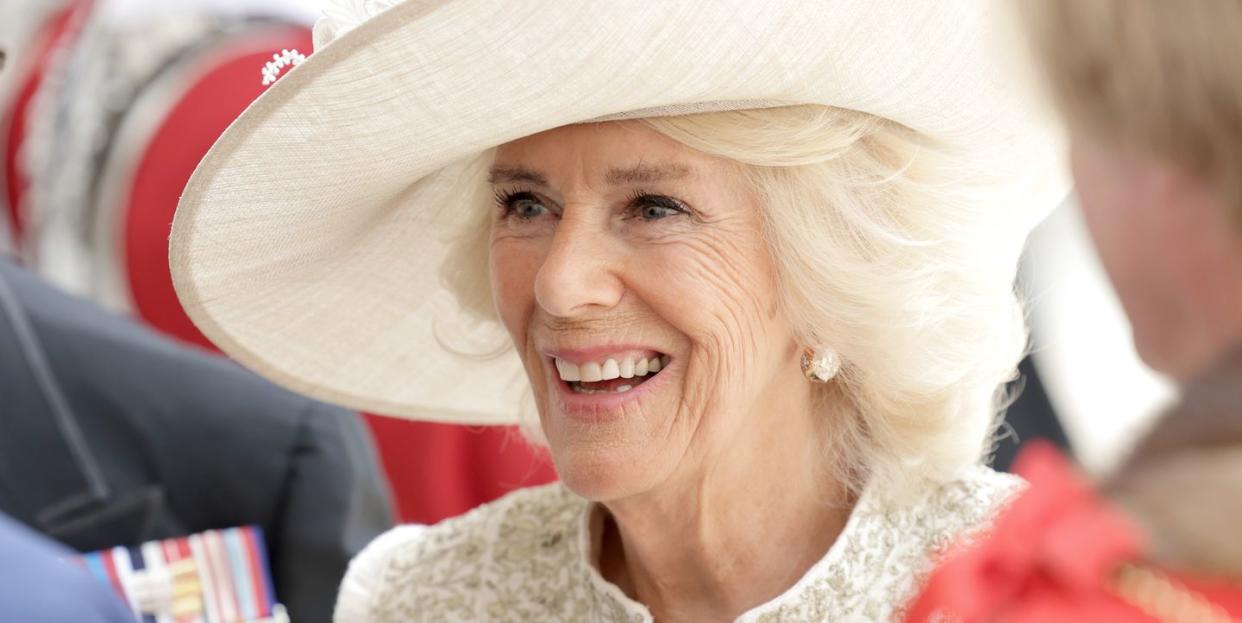
It is easy to forget how poorly Camilla Parker Bowles was thought of when Andrew Morton’s 1992 biography of Princess Diana tore the veil off a marriage that Diana would later describe as “a bit crowded.” Prince Charles’s mistress was derided as a marriage wrecker and worse, the nemesis—and “frumpy” antithesis—of the woman who would soon be remembered as the people’s princess.
Things only got worse a year later when a secretly recorded, excruciatingly personal booty call between Charles and Camilla confirmed Diana’s worst fears. Camilla’s humiliation was complete; her stock could sink no lower. It is still widely reported that angry women threw bread rolls at her outside a provincial supermarket. They didn’t, but such a scenario was entirely believable. There was froideur inside the firm, too. Camilla had shamed the monarchy and thrown into doubt Charles’s moral authority as a future king. The queen herself, it was claimed by the author Tom Bower, described her son’s mistress as “that wicked woman.”
How much things can change in 30 years. In February, Buckingham Palace marked the 70th anniversary of Elizabeth II’s accession with a bombshell statement. “It is my sincere wish that, when that time comes, Camilla will be known as Queen Consort,” the queen said, ending years of speculation about the duchess’s future title.
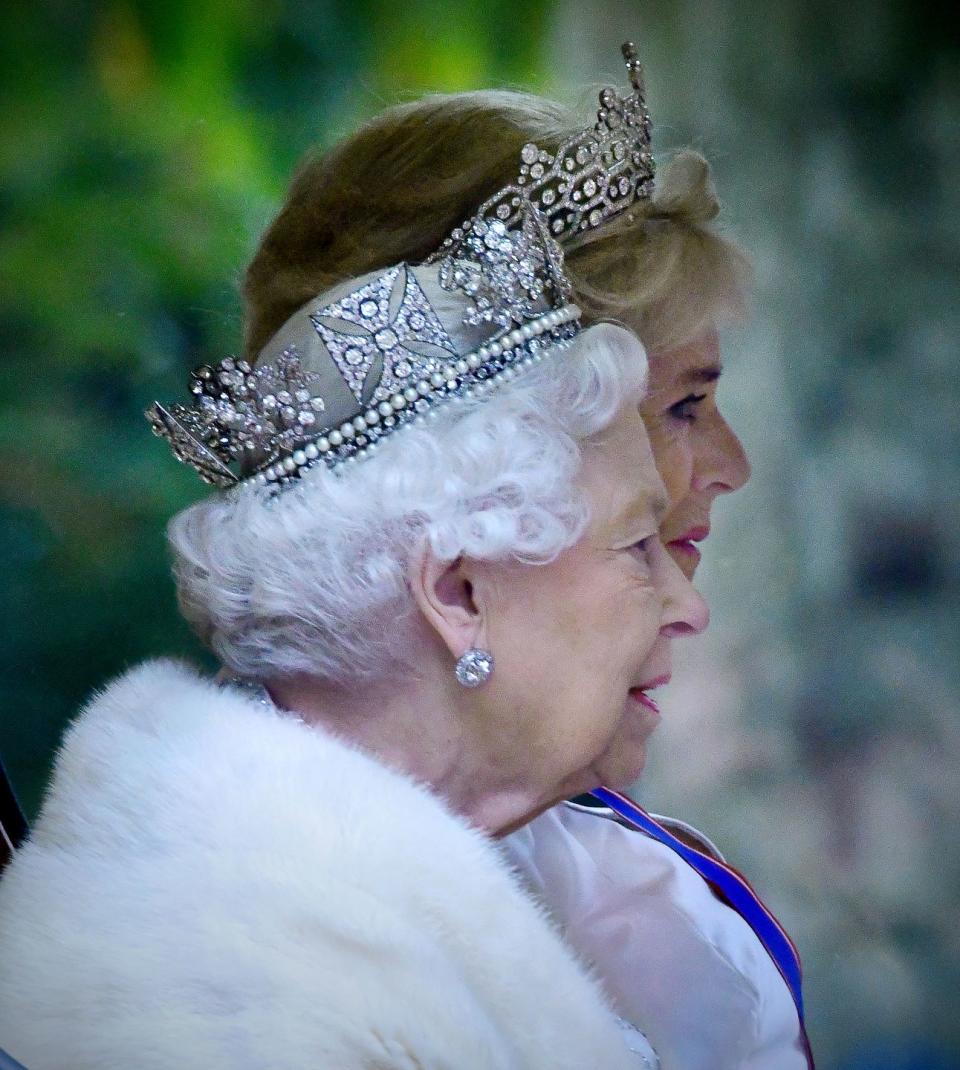
Camilla had completed an extraordinary rehabilitation. Yet she has done more than shed the skin of a royal outcast, she has become so popular that many now believe that she has the power to burnish a monarchy with dwindling support and make more sympathetic a sometimes controversial king-in-waiting.
“She’s already done that, because it was already there inside him,” the royal biographer Angela Levin tells me of Camilla’s effect on Prince Charles. (Levin’s new book, Camilla, Duchess of Cornwall: From Outcast to Future Queen Consort, is due to be published in November.) Before he could be with Camilla publicly, Levin says, “Charles was just an unhappy soul because he didn’t have support.”
It’s also hard to imagine a more down-to-earth senior member of the firm. In a recent interview in the UK edition of Vogue to mark her 75th birthday in July, she revealed that she avoids at all costs wearing clothes in a color she describes as “menopausal mauve” and that she plays Wordle every day on her iPad, comparing scores with her granddaughter by text. “She’s that sort of very English archetype of a country lady who is no-nonsense, cheerful—keep calm and carry on—and that really goes down well,” says a former senior figure inside Clarence House who was part of the team that took on the reputational rescue mission at the time of Charles and Camilla’s marriage, in 2005. Camilla will be an “anchor” for Charles and the whole institution, the insider tells me, “which is remarkable when you think how far she’s come… I’ve always thought that, for the royal family, Camilla is a secret weapon.”
The journey from royal wrecking ball to beloved future queen began in a posh house in Sussex. While there would be many reasons for Camilla’s relationship with Prince Charles to be deemed unsuitable, a lack of blue blood was not among them.
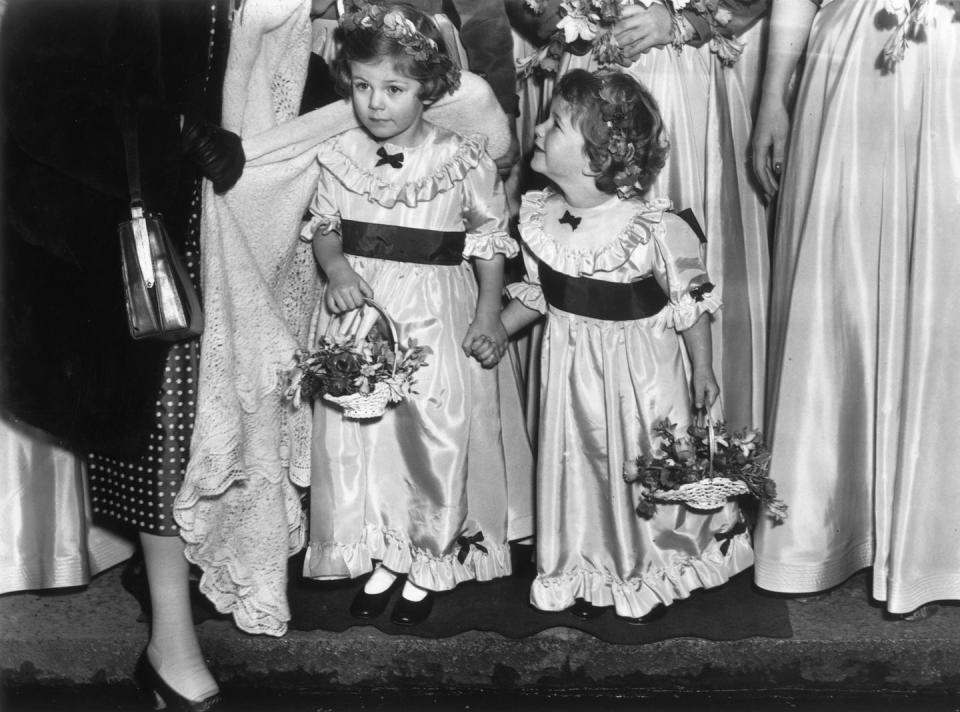
Camilla was born in 1947 to Major Bruce Shand, a polo-playing, fox-hunting army officer turned Mayfair wine merchant, and Rosalind Shand, daughter of Roland Cubitt, the third Baron Ashcombe. Cubitt’s great-grandfather Thomas was the celebrated developer of some of London's grandest squares, as well as the east front of Buckingham Palace. Camilla’s maternal great-grandmother was Alice Keppel, the mistress of the Prince of Wales, the future Edward VII. That Camilla would find herself having an affair with the current Prince of Wales says as much about the incestuous nature of the English upper classes as it does about the tendency of royal history to repeat itself.
First came a charmed childhood in a former rectory in East Sussex and another house in South Kensington. Camilla was the horse-mad eldest child of three. Her parents were lively, loving, well liked and relatively progressive (Rosalind was even thought to have voted Labour). In London they had well-used accounts at Harrods and Harvey Nichols.
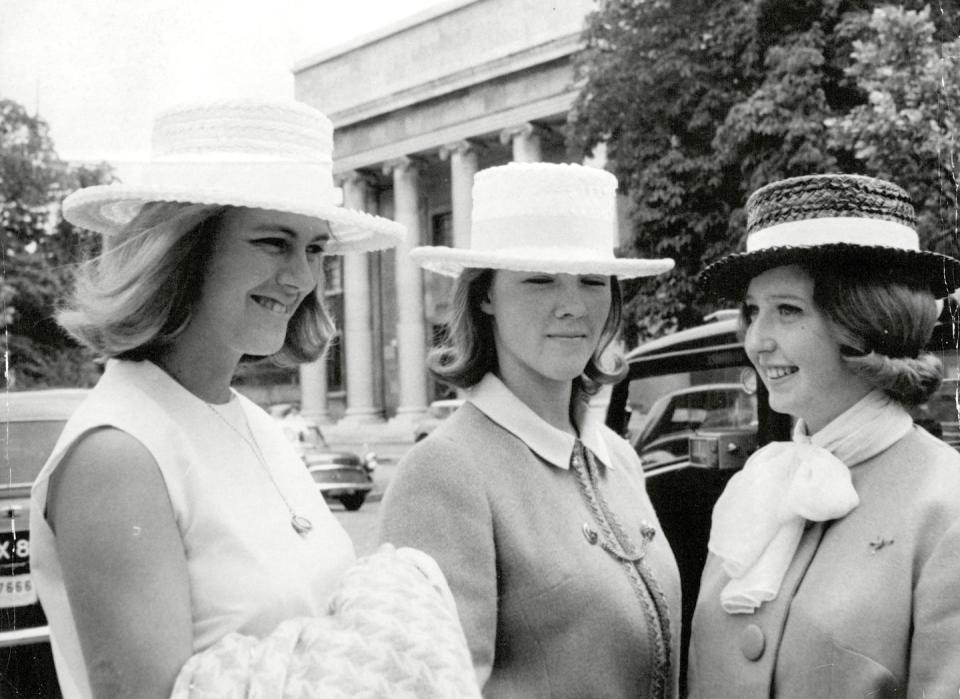
“Milla,” as she was known at Queen’s Gate School in South Kensington, was smart and sporty, if not academically inclined. One former classmate told Gyles Brandreth, the broadcaster and former MP who recently hosted Camilla’s 75th birthday lunch, in his 2005 book Charles and Camilla, that Camilla wore twinsets and pearls to class, as if she knew her destiny. “She had a magnetism and confidence I envied like anything,” the classmate said. “She was one of those people who know what they want and know that they will be a success in life.”
Teenage Camilla had a quick wit and a winning smile—and a way with boys, with whom she would often share illicit snogs and cigarettes. As the columnist Rebecca Tyrrel once wrote, “She was a posh and horsey girl with big breasts and thank goodness for them.” After Queen's Gate came a stint at Mon Fertile, a Swiss finishing school on Lake Geneva, where she was instructed in the mores and skills of the posh housewife. She did not need to be taught to have fun. After Switzerland her memories of studying at the Institut Britannique in Pairs remain hazy.
She returned to London to become a secretary. She was reportedly fired for lateness from the firm of society decorators Sibyl Colefax and John Fowler after attending a dance the night before. Camilla was everything Charles was not: carefree, confident, indomitable. “If people think I am strong, then it’s all down to my family,” she told Brandreth. “I had so much love and security growing up. I never doubted my family would be there for me in times of crisis.”
A man called Kevin Burke can claim an important footnote in Camilla’s story. She met him shortly before her 18th birthday, in 1965, days after a debutante dance held for her by her mother at a Georgian house in Knightsbridge. According to Brandreth, their relationship was brief but—crucially—consummated. As it turned out, the dalliance would seal her fate.
The ’60s were not swinging for everyone in a culture still dominated by the Church of England. Sex before marriage was forbidden, not least for the mate of the church’s future supreme governor. “With hindsight, you could say that Charles should have married Camilla when he first had the chance,” Countess Mountbatten, Charles’s godmother, once said. “They were ideally suited… But it wasn’t possible. Camilla had ‘history,’ and the Prince of Wales couldn’t marry a girl with history.”
Chastity was never a concern for male aristocrats, of course. Countess Mountbatten’s father, Charles’s mentor Dickie Mountbatten, went so far as to provide a location for the purpose at Broadlands, his country pile in Hampshire. In time Camilla would become a regular guest there.
By 1971 Camilla was in an on-off relationship with Andrew Parker Bowles, an army captain who had been a page at the queen’s coronation. But Andrew was dating Princess Anne. Stung by Andrew’s infatuation with the queen’s daughter, Camilla propositioned her son and heir at a Windsor polo match, in a vengeful seduction. Or so the story goes. Camilla told Brandreth, “It wasn’t like that at all.”
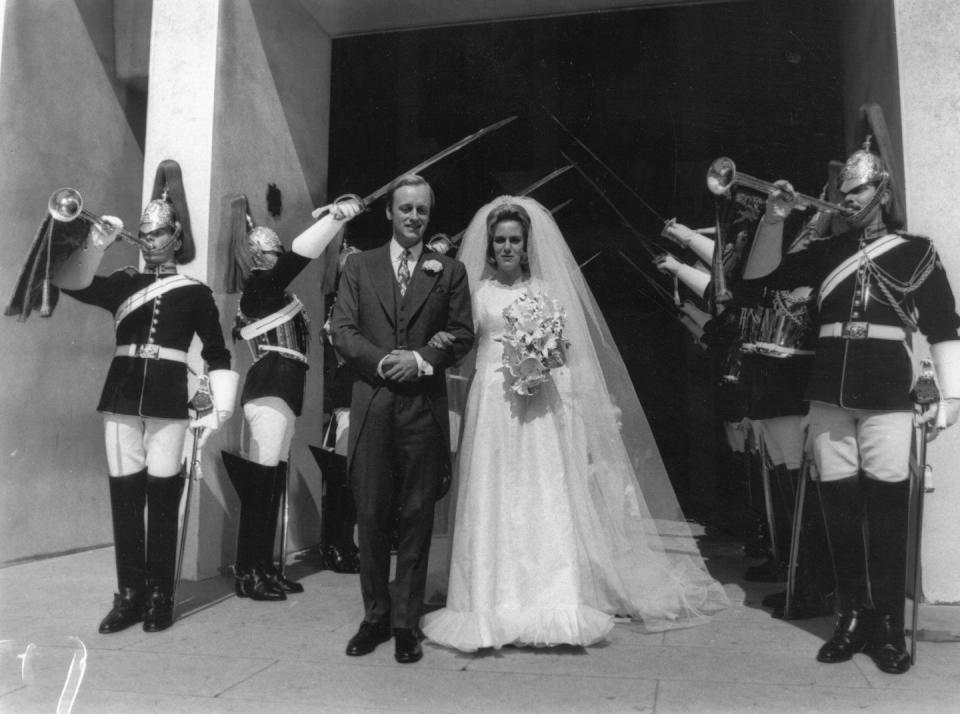
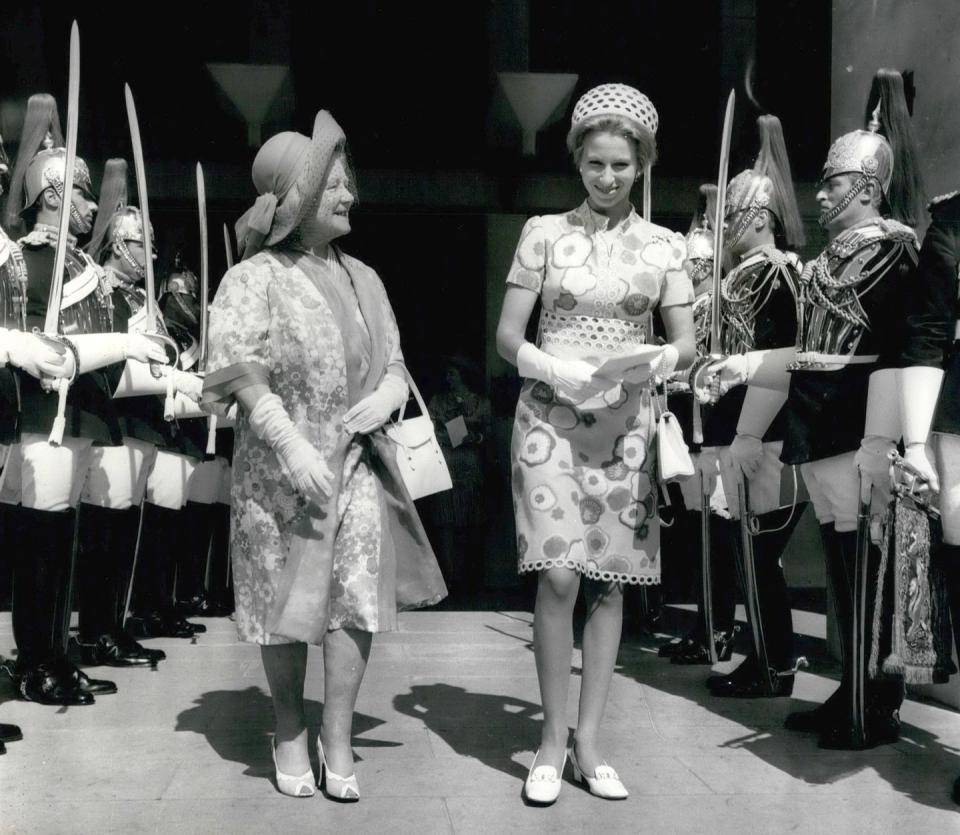
In truth there was a matchmaker: Lucia Santa Cruz, a glamorous historian and daughter of the Chilean ambassador who had met Charles when he was studying at Cambridge University. (They were not, Penny Junor writes in The Duchess, her 2017 biography of Camilla, former lovers, as has been reported.) Lucia lived in the flat above Camilla’s in Belgravia and arranged a date. “Now, you two, be very careful. You’ve got genetic antecedents,” Lucia is supposed to have joked. Charles, who is a year younger than Camilla, fell for her unaffected manners, juvenile sense of humor, and fondness for country pursuits. They immediately developed a deep mutual attraction.
The relationship flourished in semi-secrecy, at polo matches and posh suppers, and at Annabel’s, a nightclub on Berkeley Square. There were meetings at Camilla’s flat and weekends at Broadlands. According to Brandreth, Charles felt within months that he wanted to marry Camilla. But he was often away and reportedly indecisive. So the prince went to sea and, in 1973, Andrew proposed to Camilla. The Queen Mother was among 800 guests at the wedding. Perhaps mercifully, Charles was representing his mother abroad. “I suppose the feeling of emptiness will pass eventually,” he told Mountbatten after the engagement.
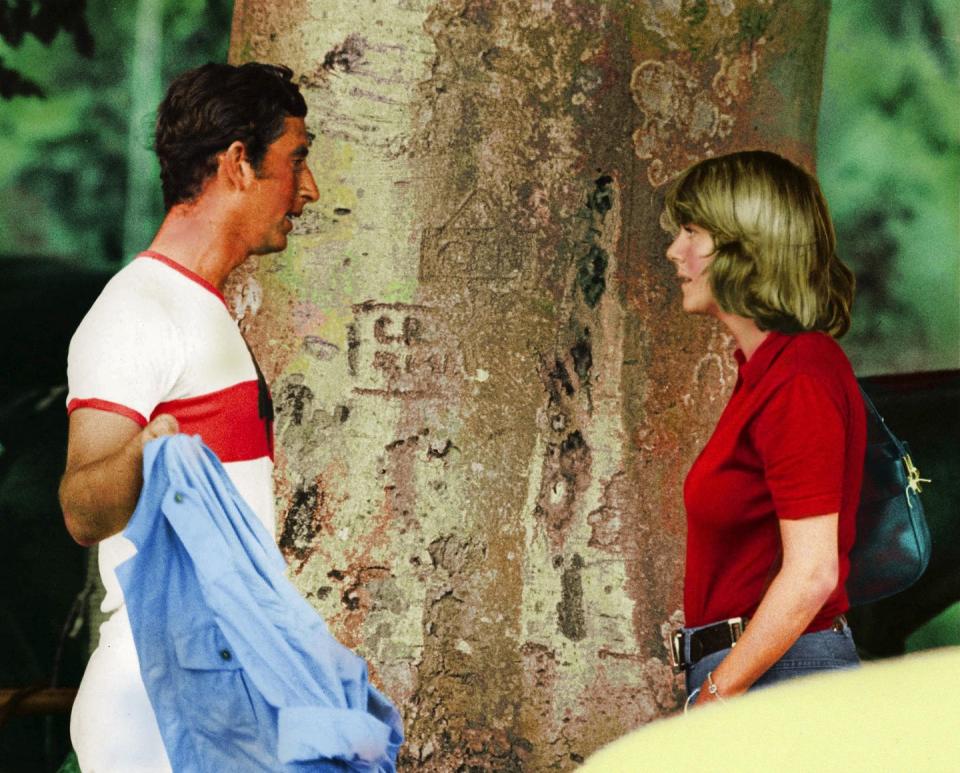
Camilla settled into a pretty manor house in Wiltshire and had two children, Tom and Laura. A royal love story seemed to be over. But Andrew was notoriously unfaithful, and Camilla’s stiff upper lip soon wobbled. “She lived with a permanent knot of dread in her tummy, that one day he might leave her,” Junor writes. “It left her very vulnerable to the attentions of a suitor.”
While Charles spent the 1970s with a string of girlfriends, he and Camilla remained friends. The prince played with Andrew on the same polo team. Camilla was a source of solace when, in 1979, the IRA blew up Lord Mountbatten on his fishing boat. By the time of Charles and Diana’s “fairytale” wedding in 1981, he and Camilla had reportedly rekindled their romance. The honeymoon set the tone. At one point photos of Camilla fell out of Charles’s diary. An argument erupted when Diana asked Charles what the entwined C's on a pair of his cufflinks stood for. “Charles and Camilla,” he confirmed—they were a gift from her.
Charles’s friends have insisted that Camilla was no more than a friend and confidante in the early years of a doomed marriage. Charles would later say that the relationship did not spark up again until 1986. Whatever the timing, at some point there were three people in the marriage. Camilla was, as the prince would later say, a “nonnegotiable” part of his life.
One of Diana’s close friends once said the princess had called Camilla “the Rottweiler” because “once she has got her teeth into someone she won't let go.” In February 1989 Diana confronted her love rival. “I do know what is going on,” Diana later recalled telling her. “Don’t treat me like an idiot.”

Ten months later Charles was lying in bed one night while staying with the Duchess of Westminster when he called Camilla, who was at home. The pair, who by now were in their early 40s, could not have known that their call was being recorded, reportedly by an amateur radio enthusiast with a scanning device. It took four years for the transcript to be leaked, and the toffish sex chat made the headlines. But while it was a gross invasion of privacy, the rest of the six-minute call remains a true testament to an enduring bond. It was also a window into Camilla’s character, highlighting her kindness and loyalty to her longtime love. She praised Charles’s “awfully good brain,” asked to read a speech he was preparing, and told him how proud of him she was, a sentiment he returned. “It was sweet and touching and about so much more than sex,” Junor writes. “These people had a proper loving, supportive, and happy relationship, the sort that both lacked in their marriages.”
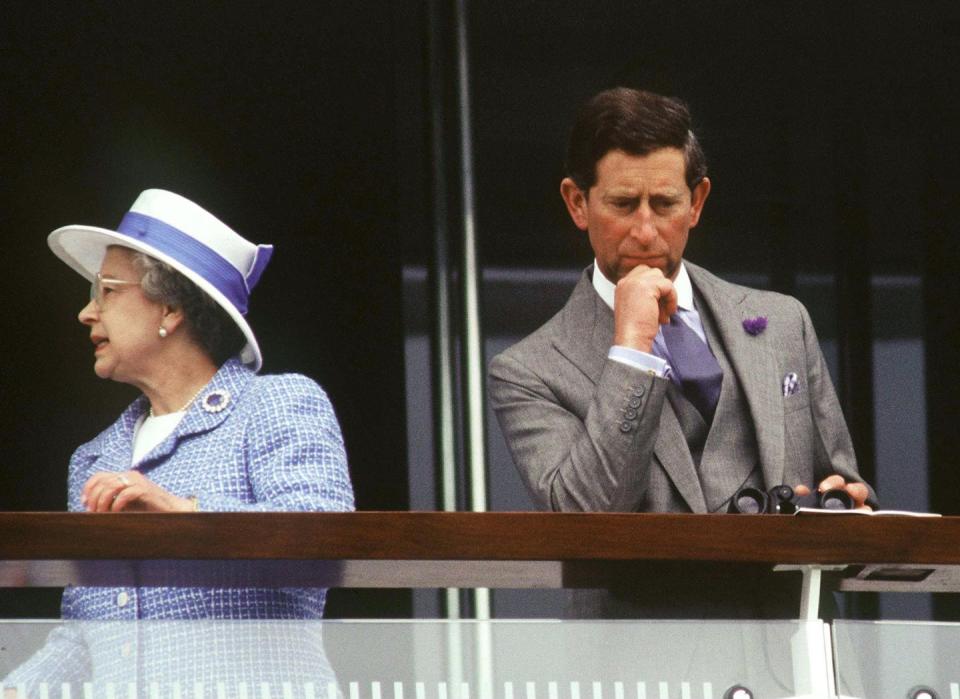
Yet the leak was a huge blow to the firm only a year after Morton’s book had come out during the queen’s “annus horribilis.” Camilla and her children became tabloid targets, and she went into hiding. Hoping that honesty might help, Charles admitted to adultery in a 1994 televised interview with journalist Jonathan Dimbleby. It backfired, and the Windsors and the Shands were furious. “I cannot imagine anyone in their right mind leaving you for Camilla,” Prince Phillip wrote to Diana.
Camilla and Andrew's divorce was finalized in 1995, Charles’s a year later after Diana’s BBC interview with Martin Bashir. They were photographed together at the home of friends as early as the summer of 1996. But the queen had been “shocked” by her son’s divorce, however unavoidable it was, and was adamant that Camilla’s “history,” as Countess Mountbatten had put it, remained a problem. “Camilla wasn’t pure,” Levin says of the period after the divorce. “She couldn’t ever come to the throne, and [the queen] refused to speak to Charles for a long time.” Camilla, whose mother Rosalind, the linchpin of her family, also died in 1994, had lost everything—except Charles.
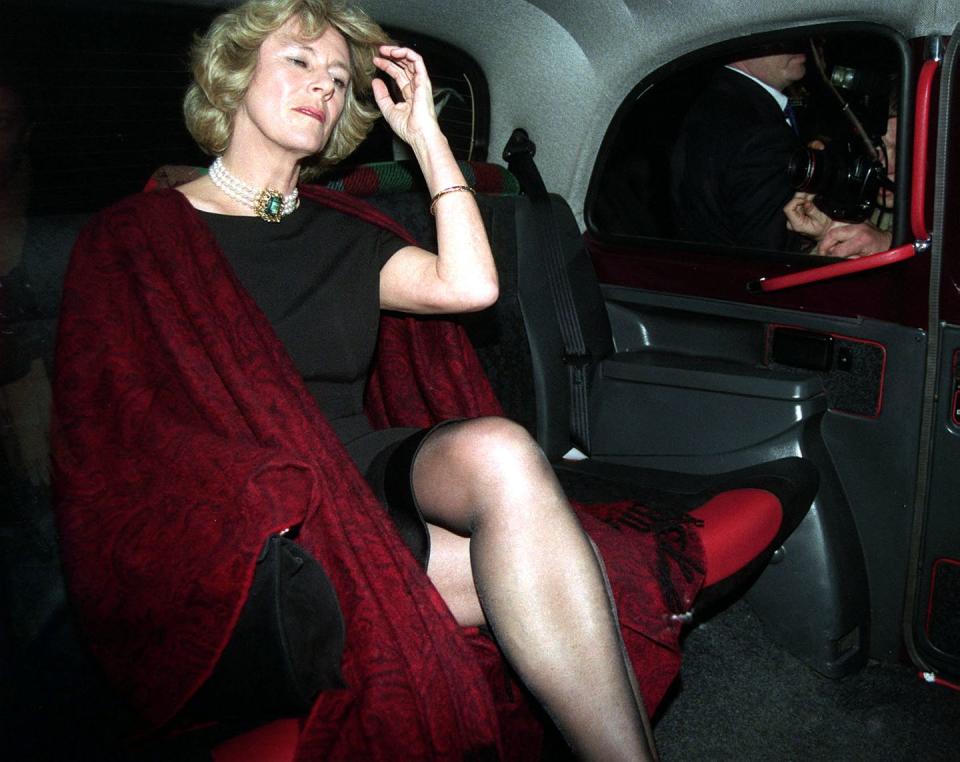
A year later Mark Bolland, a young PR executive, was brought in to scrape Charles’s reputation off the floor. He liked Camilla and did much to soften her image. The couple first appeared together after an event at the Ritz in 1999, two years after Diana’s death. The queen, who actually had much in common with Camilla, agreed to meet her briefly in 2000.
But Camilla’s status seemed to become only more awkward in the coming years. She moved in with Charles at Clarence House in 2002; the same year, according to Junor, Michael Peat joined Charles as his principal private secretary from Buckingham Palace with express instructions to force Camilla out. She seemed destined forever to carry the baggage of a mistress. “She was excluded from certain events and obliged to come and go from the back entrances of others,” Junor writes. “It was a crazy situation and demeaning.” Camilla was also still being viciously judged. In 2001 the American fashion critic Richard Blackwell had derided her as “packing the stylistic punch of a dilapidated Yorkshire pudding.”
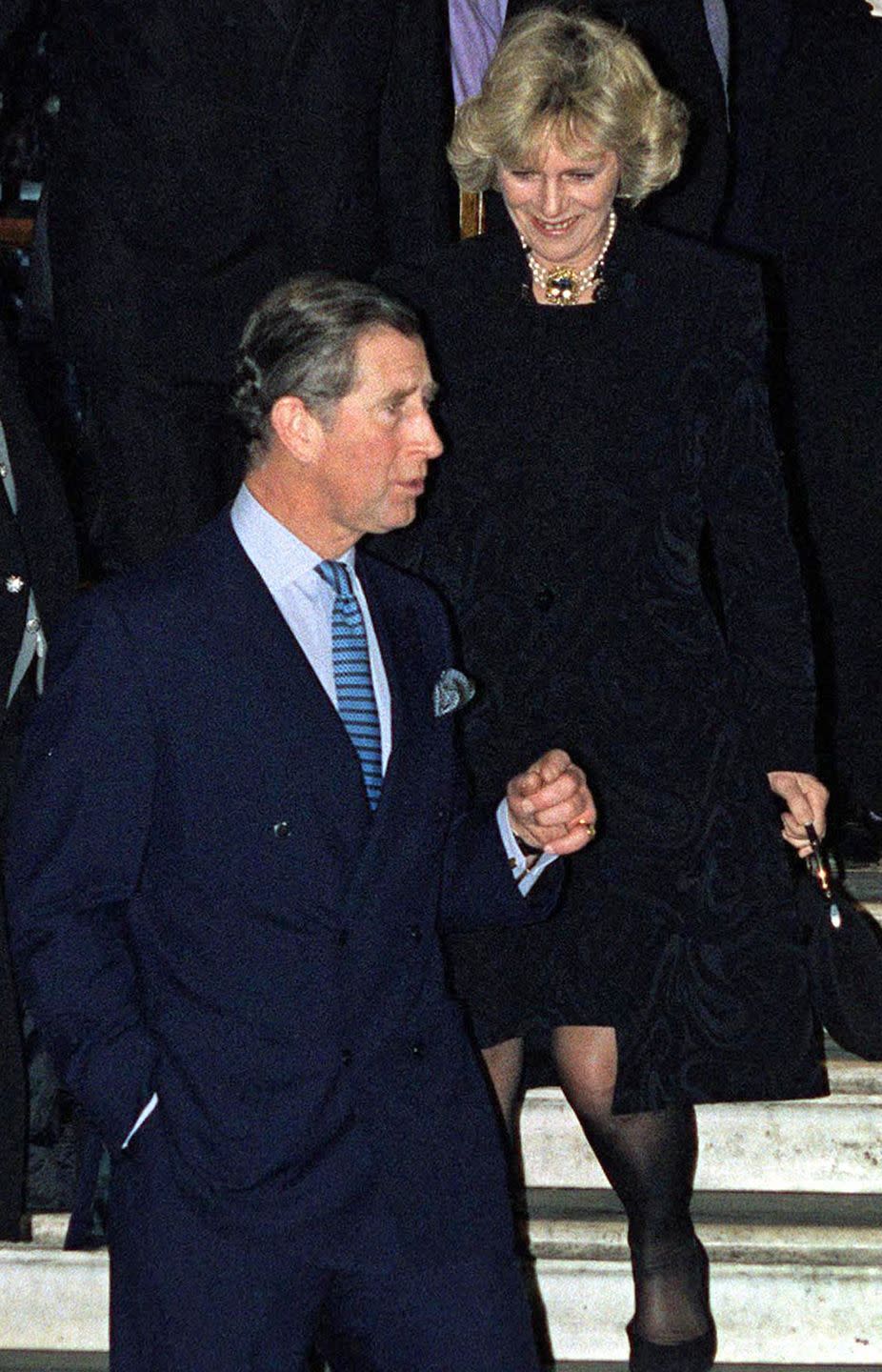
The Church of England had decreed only in 2002 that any divorced person could remarry, never mind the heir to the throne. Public opinion, meanwhile, was informed by parts of the media that were still fixated on Diana. “I wouldn’t be so crude as to say the ghost of Diana was still out and about,” the former Clarence House insider says. “But in the media’s mind that was still very much part of the story.”
And yet Clarence House’s trump card in their mission to make marriage material out of a mistress turned out to be Camilla herself. Her easy confidence and warmth had survived the trauma of the 1990s and she was ready to charm. It helped that she was unfailingly courteous with the press, despite their rough treatment of her.
Some years later, the insider remembers a “very hairy” moment when student protestors attacked the couple’s Rolls-Royce on its way to a London theater. “When Camilla arrived, people didn’t know what had happened, but the coppers were really jumpy. Camilla just said with a smile, ‘Well, there’s a first time for everything!’” The insider adds, “In a way we didn’t need to have a strategy to rehabilitate her. It was just, let her go and do the job.”
Camilla was struck with sinusitis and nerves on the eve of her second wedding. Lucia Santa Cruz was on hand with chicken soup. Weeks earlier, in February 2005, Clarence House announced that the once unthinkable would happen: Charles and Camilla, lovers for the best part of 35 years, would marry. The queen, the government, and the church had endorsed the union. At a small ceremony, followed by a reception at Windsor Castle, the mistress became the duchess who would become queen—or at least something like one. For a while it was thought she might be styled Princess Consort rather than Queen Consort.

Among the wedding guests was Stephen Fry, the writer, broadcaster, and actor. “It’s all delightful, simply delightful—she adores him and he adores her,” Fry said on that day. “The history has been unfortunate, but the history of humanity is full of star-crossed lovers who have found life difficult.”
The duchess’s detractors began to dwindle to a core of Diana loyalists—a core that, according to Tina Brown, author of The Palace Papers, includes Prince Harry but not Prince William. The “let her do the job” strategy has grown with Camilla’s mounting duties. Among her first was a tour of America with Charles in late 2005, which included a reception at the White House. President Bush remarked that he had never seen so many reporters on the south lawn. Junor recalls Camilla acknowledging the press: “She was no doubt finding it hard to believe that not so long ago she had been hiding under blankets in the back of cars.”
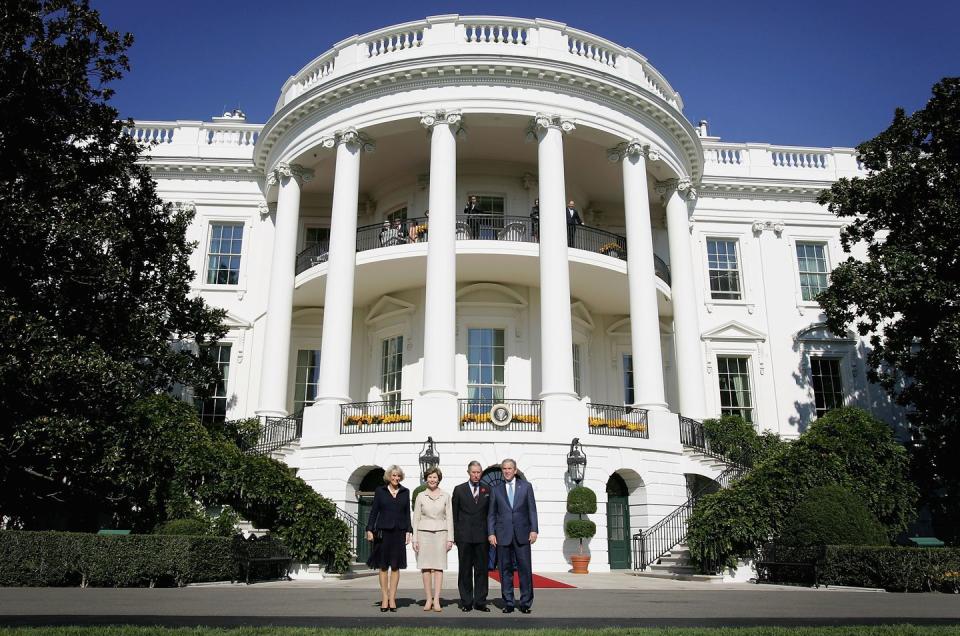
Despite some sniping— the New York Post called her “Frump Tower”—the trip was seen as a triumphant debut. Charles reportedly told Tina Brown at a reception at the Museum of Modern Art, where the guests included Sting and Yoko Ono, “Now everyone can see how wonderful she is.”
Even as Camilla’s next role looms closer, she appears to have lost none of her warmth or relatability. She has chosen her causes carefully. She began supporting victims of sexual violence after visiting rape crisis centers in 2009, and she is dedicated to several literacy charities. “She works flat out and has made her way into many areas that the royal family would previously have sidestepped,” Levin says.
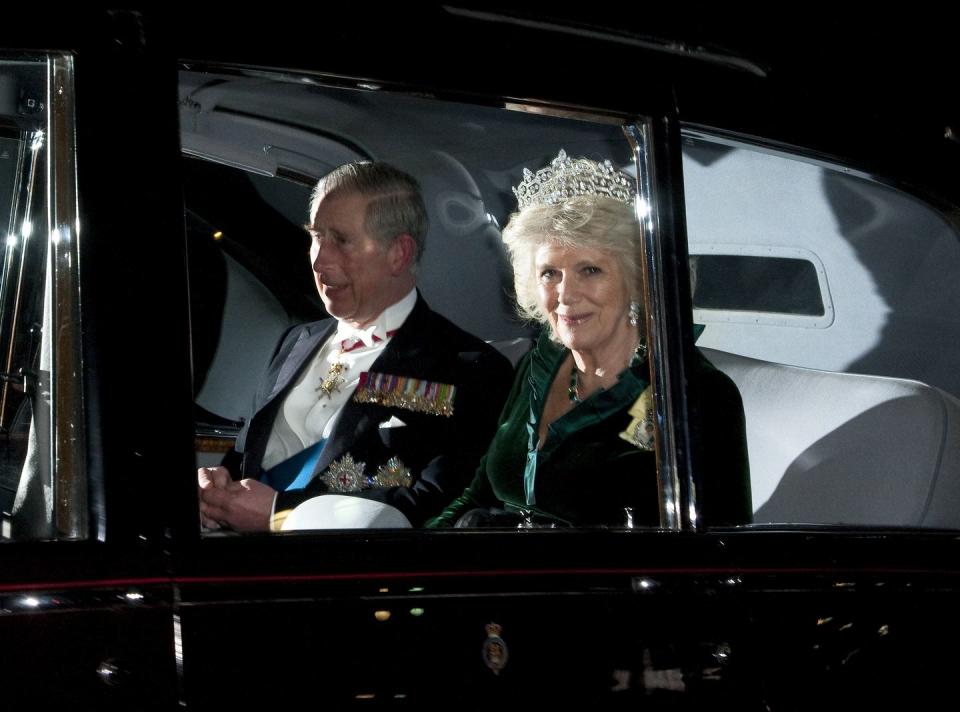
In Canada in 2017 Camilla dissolved into giggles during a performance by Inuit throat singers; Charles was apparently also stifling titters. While culturally insensitive, their response revealed the ease and joy the prince finds in Camilla’s company, even on the job. “They’re great when they’re together,” the former insider says. “She brings out a much happier and funnier side to him.”
There have long been predictions that England’s appetite for monarchy will pass with the queen. Polling has shown a steady decline in support for the institution in recent years, particularly among the younger age groups. Unlike his mother, Charles has enjoyed the relative freedom as an adult to pursue his own interests—and make mistakes. Now, the insider adds, “If people are slightly worried about what kind of king Charles is going to be, they can look at Queen Camilla and go, ‘Okay, she’s a reassuring, sensible figure.”

If the current queen’s blessing in February confirmed Camilla’s remarkable rise, the Platinum Jubilee in early June gave a hint of what was to come. Unable to attend the National Service of Thanksgiving at St. Paul’s Cathedral, the queen sent Charles and Camilla in her stead. The duchess wore an ivory and gold embroidered coat dress with a matching hat. After being cheered by vast crowds outside, she and Charles processed toward the front row, where a pair of thrones waited for them. Taking a seat between her husband and Prince William, Camilla smiled, and so did Charles.
You Might Also Like